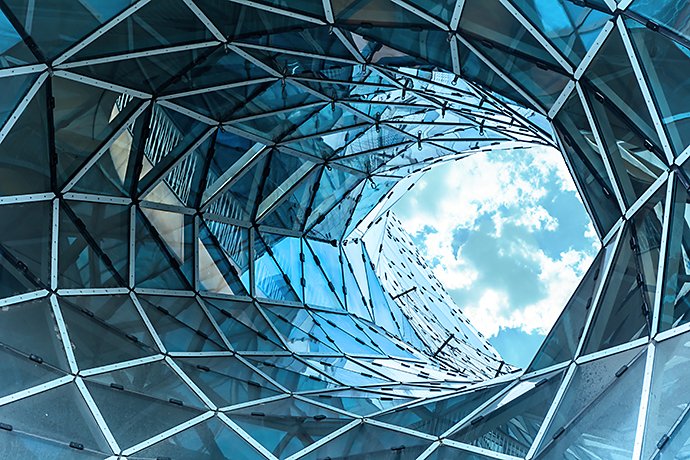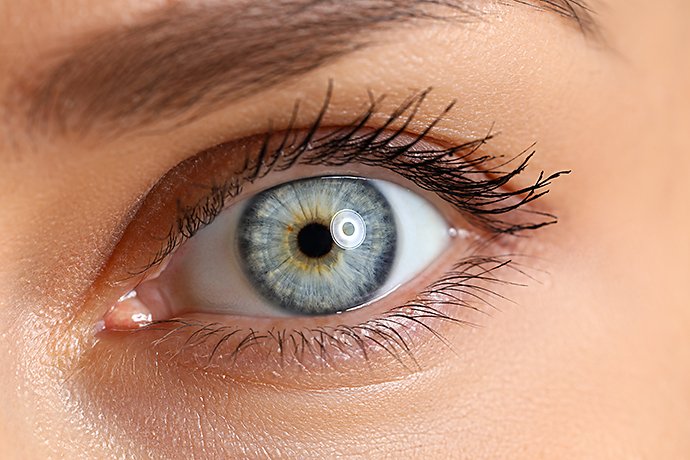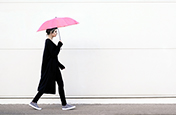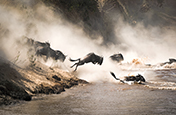Close-up photography:
how to get started and improve your skills.
Close-up photography can capture incredible images, beautiful detail and magical moments that last long in the memory. Find out how to master close-up photography as an art form with our complete guide.

What you’ll learn:
- Close up tips for getting started
- How do I achieve a close-up?
- The best camera lens for a close-up
- Filters used in close-up photography
- Other important equipment in close-up photography
- The perfect focal length for close-up photography
- Capturing an extreme close-up
- Managing the depth of field in close-up photography
- Setting lighting for close-ups.
Close-up tips for getting started.
By mastering close-up photography, you can capture personal and intimate moments in the world around you in stunning detail. From touching portraits of your loved ones, to the vibrant patchwork of colourful flowers in your own garden. Your close-up camera skills can be used in many forms of photographic shooting too, whether you capture the natural world, architecture or artwork. A few key elements to bear in mind before getting started include:
- A good eye for detail helps, but don’t worry, you can get better at spotting and capturing stunning images of faces, flowers and animals.
- You don’t need all the fanciest equipment. A good camera and a set of focal lenses will be a good start.
- Make the most of natural light. Lighting is everything in close-up photography and is important for adding the sensation of movement, emotions and texture to your finished photographs.

How do I achieve a close-up?
Close-up photography may seem daunting at first, but with the right approach and plenty of practice and patience it can be turned into a simple process. It can be tempting to try your hand at the blockbuster shots at first – think birds in flight or action from the animal kingdom – however, a little patience goes a long way when you’re just starting out. Try making the subject of your first shoots something more sedentary, like the examples below.
Faces.

You can achieve close-up face photography with a set of standard zoom lens and a traditional DSLR or mirrorless cameras. Faces, with all their facets and textures, make for intimate subjects. For close-up portrait photography, you’ll want to position yourself a foot or two away from the subject and shoot at the shoulder up. A shallow depth of field will bring the facial features into sharp focus.
Eyes.

Eyes pack in plenty of emotion, which makes them terrific for storytelling photography. You can achieve great close-ups of the human eye by using a standard zoom lens and a shallow depth of field to focus on the retina. Just be sure you aren’t caught out by getting your camera reflection in the shot.
Flowers.

Close-up flower photography can be a great starting point for beginners. Not only are flowers vividly coloured and textured, they are inert – which makes them wonderfully willing subjects. Shoot flowers on eye level and use soft, diffused lighting to really bring out the colours of the petals against your background.
Architecture.

Architecture photography is all about exhibiting the best features of a building in the best light. From interior shots for an estate agent, to chic photographs showcasing your flare for style. The key here is to use natural light to your advantage as many indoor settings will present a low light challenge. High aperture settings and a standard zoom lens are ideal for interior close-up photos.
Animals.

Whether you’re snapping beloved pets frolicking in the garden, or rare birds in the Scottish Highlands, nature photography is all about patience. You can achieve amazing close-ups with a telephoto lens. These long-distance lenses allow you to zoom in from a distance, better for undisturbed shots of animals acting naturally.
The best camera lens for a close-up.
For close-up camera photography, you’ll need the right tools for the task. Most DSLR or mirrorless cameras work with a wide range of zoom lenses for tightening focus and getting amazing close-up shots. Your kitbag should include:
Standard zoom lens.
Standard zoom lenses are the underrated stars of the cameraman’s kitbag. They come in a wide range of focal lengths and allow you to take close-up photos from a range of distances. The most common standard zoom lenses are 70mm-200mm and produce natural looking, well-lit shots. Key features include:
- 70mm – 200mm adjustable focal length
- Variable and fixed apertures
Macro lens.
Looking for incredible detail? Pack a macro lens. Macro lenses are ideal for extreme close ups. The wide range of focal lengths on these lenses make for impressively sharp photography that adds texture to your photos. Key features include:
- 18mm – 200mm focal length
- Manual focus and autofocus options for detailed shots

Telephoto lens.
Telephoto lenses allow you to get incredibly close-up shots from a safe distance, making them a favourite of wildlife photographers. They pack a powerful magnification and the top of the range options can shoot from a few hundred feet away. However, their high rates of magnification mean they often have a lower depth of field. Key features include:
- 85mm – 500mm telephoto range
- Precision focus for blurred background shots
Is autofocus or manual focus best for close-up photography?
For precise close-up photography, you’ll want to upscale your manual focusing skills. Many modern lenses come with autofocusing technology, which is generally accurate and very quick – perfect for capturing moving subjects. However, for super-detailed shots, adjust the focus yourself until you’re happy with the look and feel of the shot.
With manual focusing, you can account for poor light conditions and might even have an easier time focusing on a subject than the camera’s built-in autofocus technology.
Filters used in close-up photography.
Filters are a more affordable way of achieving incredibly detailed macro photographic images. They work in a similar fashion to a macro lens, allowing you to focus on tiny details such as flower petals and insect eyes. However, they can be bought for much less than the £400+ a macro lens might cost. Filters usually come labelled numerical, such as +1, meaning that they add at least a metre of focus to your camera lens. The higher the number, the closer you will be able to magnify your image.

Other important equipment in close-up photography.
You can get started with a good camera and a set of lenses, but if you want to progress your close-up photography further, you could expand your kitbag with:
- Extension tubes – these lens add-ons help you get even closer to the subject by extending the distance between camera body and lens.
- Tripod – guarantee a steady shot by attaching your camera to a sturdy tripod.
- Remote shutter release – remotely control your camera shutter, perfect for taking undisturbed wildlife photos.
- Lens weather cover – tackle all types of weather by keeping your kit safe and dry with a waterproof all-weather cover.
The perfect focal length for close-up photography.
It’s possible to get great close-up shots with different lenses and focal lengths, depending on subject and lighting. Other than your camera, your lens is your most important piece of equipment. As with any tools, different lenses can be used for different jobs.
The focal length refers to the distance between the optical centre of your lens (where beams of light from different angles meet) and your camera’s interior sensor. In more simple terms, it refers to how wide, or tight, your angle of view is. The shorter your focal length (in millimetres) the wider the angle (and view) of your photographs. For close-up photography you should be using lenses with a focal length of over 42mm.
42mm.
This standard kit lens is a great starting point for close-up photography. Though it doesn’t get the tightest of shots, you can still get impressive close-up images with a 42mm lens.
50mm.
A 50mm lens takes in a lot of light, which makes it perfect for shooting in low light conditions, such as early morning or evening. 50mm also has similar angle of view to the human eye, meaning your photos are likely to look very natural.
85mm.
With a fast aperture and compact size, the 85mm lens is a favourite among portrait and landscape artists alike. Its versatility lends it to switching between shoulder-length portrait shots and wider-angle scenes of cityscapes and woodland walks.

100mm.
For incredibly sharp images, you’ll want to pack a 100mm into your kit bag. Excellent for portraits and flower photography, the incredible detail achievable with a 100mm lens makes it a top choice of macro lens for family scenes and nature shots.
100mm+.
Over 100mm and you’re entering telephoto lens territory. These long lenses can capture subjects hundreds of metres away, but tend to sacrifice their depth of field in favour of their long-distance shot range.
Capturing an extreme close-up.
Extreme close-up photography, also known as macro photography, is the art of taking incredibly sharp, detailed images of tiny subjects. You may have seen some macro photography images yourself – such as insect eyes, flower petals and bird feathers.
You can achieve these kinds of images yourself with a little practise. You’ll need to start by attaching a macro lens to your DSLR or mirrorless camera.
What is the difference between a close-up and an extreme close-up?
A close-up usually includes the subject’s head and shoulders or other background detail, while extreme close ups are much more detailed and focussed, and can be as close-up as a single eye.
How do you do extreme close-up photography?
Here are some top tips for getting an extreme close-up photo with your macro lens:
- Use a lower aperture for a shallow depth of field. This will help bring the subject into focus and out of the background.
- Make sure you’re making the most of natural light – go artificial if you have to.
- Manual focus is the way to go here. Tinker until you’re happy with the sharpness of the image.
- Make sure the camera is in macro setting or raise the shutter speed to avoid close quarter image blur.
- Take your photo.
You might need a bit of practise to get the lighting and blur right, but with persistence you can achieve fantastic extreme close-ups yourself.
How do you get an extreme close-up of eyes?
They say eyes are the windows to the soul – and indeed, some of the most impressive macro photography out there is of the human eye. The human eye carries plenty of emotion and images of them can tell a story. To get detailed shots of the human eye, you can use many of the tips mentioned above for extreme close-up photos.
- Use a shallow depth of field.
- Account for lighting and use artificial sources if need be.
- Switch your camera to macro setting and up the shutter speed.
- Manual focus on the retina.
- Steady your hands and take the shot.

Managing depth of field in close-up photography.
The depth of field refers to the distance between the closest and farthest away objects that are in focus and appear sharp. The depth of field can be altered by changing the aperture settings and focal length on a camera.
A shallow depth of field, for example, will bring objects closer to the camera into sharp focus – which is good for close-ups..
Aperture.
Aperture is how much light enters your camera. By controlling the aperture setting, you change the size of the hole in your camera where light enters the lens. The size of the hole is measured in f-stops. The lower the f-stops, the shorter your depth of field. You’ll want a short depth of field for close-up photography. For wildlife or flower photography, an f-stop of 2.3 might be a good start.

Setting lighting for close-ups.
To be proficient at close-up photography, you need to master the elements around you. Make the most of natural lighting and you’ll catch subjects at their most raw and impressive. Of course, clear days can be hard to come by, so it helps to know how to handle adverse conditions or different times of day to enable you to shoot in all kinds of light.
Cloudy light.
Cloudy lighting is great for capturing saturated colours and personal photographic moments. Lighting is less harsh, giving the picture a softer feel.
Morning light.
Clear mornings are perfect for shooting if you want golden hues and dappled shadow effects for your photos. Of course, this might only apply in warmer seasons. The low light levels of a midwinter morning may be too dark to shoot in without your own lighting equipment.
Afternoon light.
Bright sunlight can sometimes be a little too harsh and might wash out your photo, or cast your subject in deep shadow. Aim for a late afternoon shoot if you’re capturing images during the day. As the sun sets, the world around you will be cast in a golden hue and illuminating scenes naturally will be much easier.
Evening light.
You might find that evening light is pretty unaccommodating when it comes to shooting without your own lighting tools. However, if you are daring enough for shooting in the dark, aim for sunset and the period shortly after as there will still be enough daylight to capture more natural feeling close ups.
Unnatural light.
Shooting indoors, or with artificial light, can be a challenge. But the different diffusion levels and light sources indoors can add a new dimension to your photography. Make the most of reflective surfaces to bounce light around the room and shoot your subjects at eye-level for a natural appearance. .
Close-up photography inspiration and examples.
Faces.
From family photos to acting portraits, human faces make emotive and interesting subjects for close-up portrait photography.

Eyes.
Architecture photography is all about exhibiting the best features of a building in the best light. From interior shots for an estate agent, to chic photographs showcasing your flare for style. The key here is to use natural light to your advantage as many indoor settings will present a low light challenge. High aperture settings and a standard zoom lens are ideal for interior close-up photos.

Flowers.
Flowers are beginner-friendly with wonderfully vivid colours to make your photos truly stand out.

Architecture.
Interior design and external estate shots showcase the beauty of architecture. Use a steady hand and lighting tricks to get the best of the room.

Animals.
Capture all the action from the natural world with a telephoto or macro lens and plan to patiently wait for that awe-inspiring moment.

Close-ups can work in all types of photography – whether your subject is an animal or a piece of architecture. Once you’ve taken on board our tips, start shooting and see what results you get.
You might also be interested in…
How to use, and break, the rule of thirds.
Improve your photo composition skills to capture more stunning images.
Understanding shallow depth of field.
Explore how shallow depth of field can add dimension to your photographs.
Discover how adjusting shutter speed can help you capture clean shots or motion-filled moments.
Tips for capturing nature photos of all kinds.
Explore the possibilities of nature photography, from animals in motion to sprawling landscapes.



